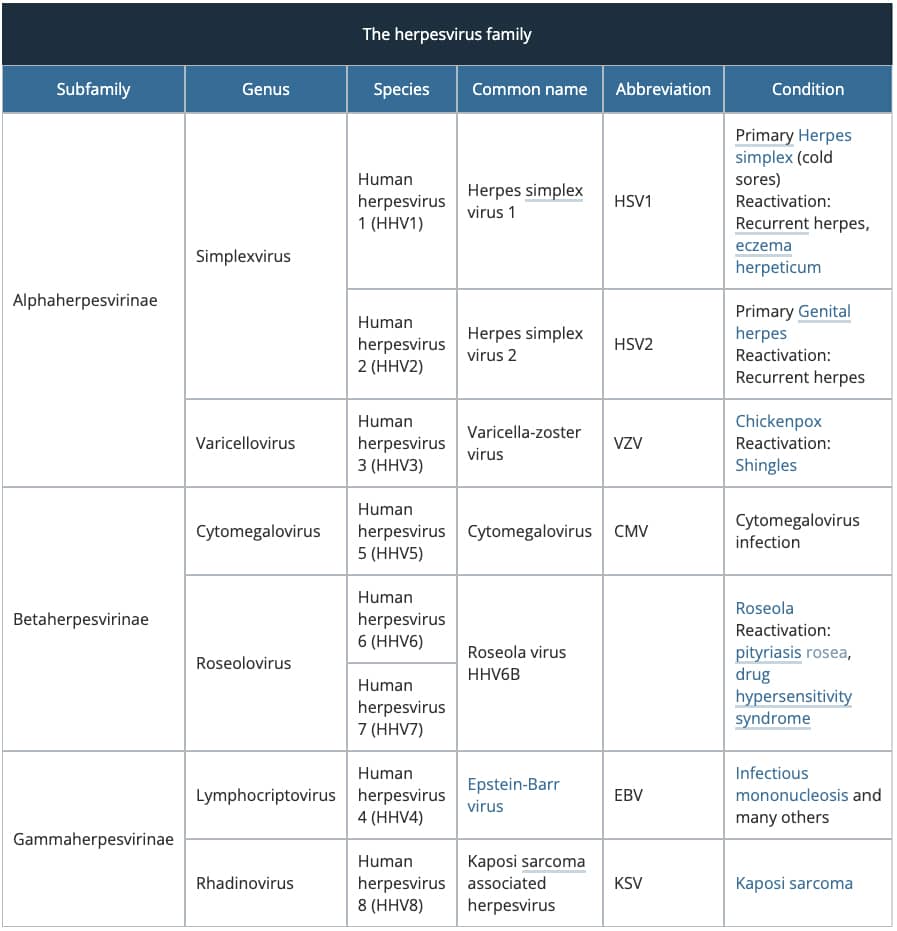Main menu
Common skin conditions

NEWS
Join DermNet PRO
Read more
Quick links
Author: Dr Amanda Oakley, Dermatologist, Hamilton, New Zealand, 2013.
The human herpes viruses (HHV) include several very common viruses that have cutaneous manifestations. The Herpesvirales order (family Herpesviridae) is characterised by:
